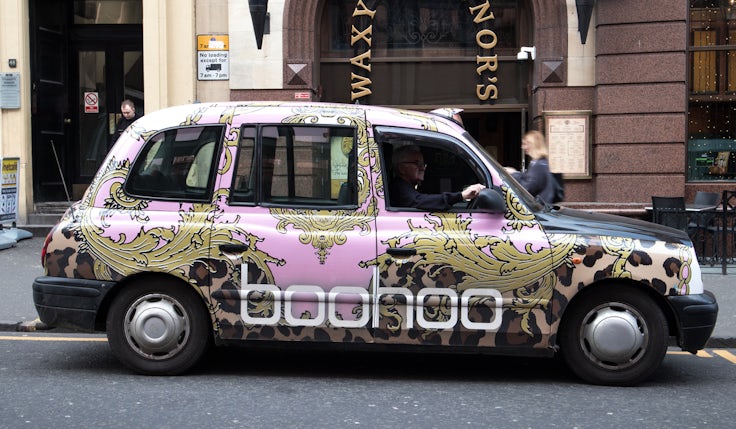Diagnose first, strategise second: Why you need to start at the beginning when planning
As part of a new mini-series looking at the different stages of planning, from strategy setting and targets to budget and ambition, our marketer on the inside shares how they are overcoming some of the common pitfalls.
 My eldest son came home from university at the weekend. He’s 20 now. His younger brother had nabbed his old room, so we said he could get some new furniture, redecorate his new room and make it feel like his space for the summer.
My eldest son came home from university at the weekend. He’s 20 now. His younger brother had nabbed his old room, so we said he could get some new furniture, redecorate his new room and make it feel like his space for the summer.
Watching him building a cupboard to hang all his clothes left me somewhere between despair and hilarity. In fairness the instructions were beyond vague, but there were instructions and a method to follow, albeit even more cryptic than some fiendishly complex arboreal Meccano set. Instead, rather boldly, he decided he could work it out himself, based on his own superior intellects and native intuition. So he blithely ignored the instructions and just dived in – wood, glue, various swear words and many, many screws and rebuilds later, there it stood upright. Maybe a bit of discipline, patience and forward planning would have yielded better and faster results?
Planning for 2024 is very much upon me and my colleagues in the leadership team too. Whilst it may feel early for some, our financial year starts in January, which means strategy and budget will be locked down at the end of October. So, any significant change to our spend profile will need to be signalled to finance by the end of July, ahead of those gruelling budget meetings in September. That leaves a few short weeks to get our strategic house in order.
It is incumbent on marketers to force the strategic debate: Here’s howAhead of our first set piece meeting, we have been thinking about what questions we need to answer. As a fairly new team turning a very large business into a well known brand, one of the big questions to answer is: where exactly are we going in the long run, now that we have built our capability as a central function? Others include: what should we be famous for? What will it take to achieve significant change? Exactly how ambitious are we, and is our ambition realistic? Do we have the right resources, and what pace can we get the organisation to run at?
In all honesty, addressing these questions is really testing when we are mid way through deploying our 2023 activity. But, this is the window of opportunity where we can lift up the bonnet and examine our approach to winning, being clear about our current performance to the plan, and true to ourselves about what we need all parts of the business to deliver in the next year.
Stop and pause
Rather than step back and put in place a structured approach to unpacking these questions, we did what most confident leadership teams do, we made some assumptions and rushed into discussion on the solutions. On the basis that we had done the thinking last year, and we’re broadly aligned, the belief was that there would be common understanding and alignment.
But, unsurprisingly, we got stuck. Well, maybe not stuck, but we have had a false start. It comes down to three areas where there is, in fact, little alignment: Firstly, in how we leverage our corporate competencies. Secondly, in which audiences we are prioritising. Thirdly, in a common understanding of what our target audiences actually need, that we can deliver brilliantly.
Progress will only happen if there is jeopardyIn addition, some on the team have been lured into wishful thinking, dreaming of an end-state that takes us way beyond what we actually do to make money, at a scale that is simply not affordable. Being a purpose-led business does involve philanthropy. But we are not a charity or social enterprise, so adding a spoonful of pragmatism and commercial nous is required medicine.
Just to complicate things further, there are voices calling for a rather simplistic and singular view of how we position the brand. Ignoring that there are at least three benefit areas that could and should be used to position us well with our most likely target segments and broader stakeholders. We will never ‘be famous’ for just one thing. And we don’t need to be. It’s the combination of our scale, capabilities and purpose, in the context of what our customers want, that will give us distinctiveness, and a position we can own.
Rewind
So, we’re going to rewind a bit. Having won the argument on starting with the customer, I am off to bring to life a market segmentation my team have been developing. Additionally, we’re doing an insights refresh on key audiences to sense check assumptions and identify any significant attitude or behaviour changes.
Separately, my colleagues are doing their own homework on where we are, at a functional and corporate level, so we are clear in our competencies and capabilities.
Don’t make large assumptions, and definitely avoid the temptation of jumping to solutions too early in the process
Lastly, our strategy team are preparing a straw man on what it will take to shift the market from a behavioural perspective, thinking through the political, economic, social and timing issues that we need to work with, or change.
We’re going to meet again for an all day offsite in the next few weeks for a planning restart. The aim? To agree the priority audience/s; discuss a prototype brand positioning; and identify the big rocks we will need to move over the next few years, and then prioritise what needs to be addressed in 2024.
The lesson? Diagnose first, strategise second. Don’t make large assumptions, and definitely avoid the temptation of jumping to solutions too early in the process. In short, the secret to doing a good job, like answering strategy questions successfully, or indeed, building a new cupboard, is to start at the beginning.




Comments